In today's digital landscape, building a strong online audience is paramount for any business seeking to thrive. The competition for attention is fierce, and traditional marketing tactics are no longer enough to cut through the noise. To truly connect with potential customers and build a loyal following, businesses need to embrace innovative and engaging content strategies. Video content has emerged as a powerful tool for achieving this goal, offering a unique ability to captivate audiences and drive meaningful results.
The potential of video content to build a strong online audience is undeniable. With the right strategy and execution, you can leverage the power of video to connect with your audience, build brand awareness, and drive meaningful results. Let's dive in.
Key Takeaways
1. ePlus
ePlus is a banking solution that is designed to make switching banks easier. The video is designed to educate viewers on the benefits of switching to ePlus, encouraging them to make the change.
Video Design -
The video features a simple, minimalist design. It uses illustrations and animations to create a clear and concise message. The video is engaging with bright colors and clean lines.
ePlus has successfully created a video that will help the company grow its audience. The design is visually appealing and helps explain the benefits of their service in a way that is easily understood. This style is well-suited to reaching new customers online and building a loyal base of users.
2. Voith
Voith provides innovative drive technology for the offshore market. The video is designed to promote Voith's BRIDGE technology, which connects offshore vessels to wind turbines.
Video Design - The video uses high-quality CGI to depict the vastness of the open sea and the wind turbines. The design incorporates blue and white color palettes, which represent a clean energy future. These color palettes are frequently used in Voith videos.
Voith has successfully used this video to grow its online audience. The video engages viewers by highlighting the challenges and opportunities of the offshore wind market. The imagery is captivating and the video's message is clear. Voith's online audience is expanding by promoting its innovative technologies through engaging visual content.
3. IONOS
IONOS is a European company providing cloud infrastructure, solutions, and hosting services. The video is designed to showcase IONOS cloud’s reliability, flexibility, and affordability while also emphasizing the company's commitment to data sovereignty.
Video Design - The video uses a combination of CGI animation, product demonstrations, and on-screen text. The visuals are clean, modern, and professional, with a focus on showcasing IONOS’ cloud platform’s capabilities. The video’s design reflects IONOS' emphasis on ease of use, with drag and drop configuration through its patented Data Center Designer. The video also uses a consistent color scheme throughout.
IONOS has successfully achieved the goal of building audience engagement. The video highlights the challenges of traditional cloud computing and presents IONOS’ solutions as a more cost-effective, secure, and manageable alternative. The use of CGI animation captures viewer attention, and the demonstration of IONOS’ products highlights their unique features, while the calm and professional tone encourages viewers to learn more about IONOS.
4. Canon
Canon offers a comprehensive line of award-winning office imaging solutions and services. This video is designed to showcase the imageRUNNER ADVANCE series, highlighting its capabilities and achievements.
Video Design - The video uses bright, playful colors, and simple, engaging graphics to illustrate the benefits of the product, showcasing its features, such as advanced scan functionality and cloud-ready capabilities. This design style aligns with Canon's brand, aiming to present complex technology in a simple, accessible manner, making it relatable to a wider audience.
Canon has successfully achieved the goal of driving audience engagement through the video's clear visuals, compelling narrative, and use of bright, engaging color palettes. The video's visual elements and straightforward messaging effectively convey the core value proposition of the product, helping to increase audience interest in the imageRUNNER ADVANCE series.
5. Atlas Copco
Atlas Copco is a company that creates solutions for the industry. The video is designed to highlight the benefits of smart compressed air systems for businesses.
Video Design - The video uses animated graphics. The video design is simple, featuring clear and concise animations. The color scheme is consistent, with a focus on a clear blue and white background, with bright colors for other objects, which makes the content easy to understand.
Atlas Copco has successfully achieved the goal of boosting audience engagement. The video uses a simple narrative that is relatable to the target audience. The animations are engaging and help to explain the complex features of their smart factory solution. The visual style is simple, clean and straightforward, which makes the information easy to understand. The video uses the company name throughout, and highlights the smart compressed air systems as the solution to several problems that small business owners can face. This helps to create a strong brand presence and increases the audience's interest in their products.
6. Quuu
Quuu is a content suggestion platform that helps brands with their social media content scheduling. The video is designed to demonstrate how this solution works.
Video Design - The video features a clean and modern design with a flat, cartoon-like style. Bright and pastel colors like blues, yellows, and oranges are used to create a cheerful and vibrant feel, this is typical of most modern marketing videos. The video is split into various boxes, showcasing the usage of content and social media for promoting products and brands. These boxes are animated, which provides a dynamic feel, and this dynamic feel helps in keeping the audience engaged.
Quuu helps its users engage with their audience by providing personalized content recommendations that match their brand identity and are relevant to their target audience. The video does a great job of showcasing the value proposition of Quuu through animated graphics, showcasing its ease of use, and the ability to connect with an audience by utilizing relevant content. This is a great example of how a simple video can be effectively used to showcase a product or solution, and how Quuu achieves audience engagement through its content suggestions and social media scheduling platform.
7. YDS Devon
YDS Devon is a digital solutions company offering unified communications services through partnership with Gamma Telecom. The video is designed to highlight the benefits of Horizon Collaborate, a cloud-based unified communications solution that simplifies internal and external communication.
Video Design - The video features a minimalist design with white outlines on a purple background. The animation uses simple and stylized graphics, representing various communication channels like voice, video, instant messaging, and conferencing. The animation effectively demonstrates how Horizon Collaborate streamlines various communication needs.
YDS Devon has successfully achieved the goal of boosting audience interaction through the video. The video's simple yet engaging design, combined with the visual representation of Horizon Collaborate's capabilities, makes it easy to understand the benefits of the solution. The video highlights how Horizon Collaborate can improve communication efficiency and connect with colleagues and clients in a simplified manner, effectively engaging the audience in understanding the value of their solution.
8. BILL
BILL.com streamlines accounts payable processes. The video is designed to showcase the company's solution and its benefits for businesses.
Video Design - BILL.com utilizes a clean and modern design aesthetic, with simple yet effective animated graphics. The use of bright colors and straightforward illustrations helps clarify complex concepts and makes the video engaging. The animation style is crisp and easy to understand, featuring icons, simple characters, and clear transitions.
BILL has achieved the goal of educating the audience about their solution. The video effectively highlights the problems associated with traditional accounts payable methods, like managing payments from various platforms and tracking payment statuses. By demonstrating how BILL.com simplifies these processes, the video clearly articulates the value proposition for potential customers. This straightforward approach helps viewers understand how the platform can streamline their operations and increase efficiency. The video's overall tone is friendly and encouraging, suggesting a positive experience with BILL.com.
9. Zoho
Zoho Creator is a low-code development platform that lets businesses build powerful solutions without the need for extensive technical knowledge. This video is designed to showcase the capabilities of Zoho Creator 6 and encourage businesses to try it out.
Video Design - Zoho Creator 6 is presented in a modern and approachable manner, using 3D animated characters, icons and bright colors. The video features a lighthearted tone that aims to make the complex process of building custom applications seem simple.
Zoho has successfully created engaging video content to connect with their audience by emphasizing the benefits of using Zoho Creator, such as building custom applications quickly and efficiently. The video’s engaging visuals, use of colorful animation, and focus on simplifying complex processes make it easier for the audience to understand the value of the product and encourages them to try it out.
10. KPMG
KPMG Lease Hub is a cloud-based solution designed to ease the burden of AASB 16 compliance for businesses.
Video Design - The video prominently features a graphical representation of the lease accounting standard and showcases various data points on a chart, indicating the complexities of the standard. This reflects the challenges businesses face when trying to comply with AASB 16.
KPMG's video effectively connects with its audience by focusing on the challenges businesses face when dealing with complex accounting standards. The video highlights KPMG's expertise and ability to simplify complicated processes. By presenting a user-friendly solution, the video positions KPMG as a trusted partner capable of guiding businesses through the intricacies of AASB 16.
Video Marketing Strategy
**** A Video Marketing Strategy is a comprehensive plan that outlines how you will leverage video content to achieve your specific business goals. It goes beyond simply creating videos and involves a deep understanding of your target audience, your competitive landscape, and the platforms where your audience consumes content.
A robust video marketing strategy includes:
* **Defining clear objectives:** What do you want to achieve with your videos (e.g., increase brand awareness, generate leads, drive sales)?
* **Identifying your target audience:** Who are you trying to reach with your videos, and what are their interests and preferences?
* **Conducting competitor analysis:** What are your competitors doing with video, and how can you differentiate your approach?
* **Choosing the right platforms:** Where does your target audience spend their time online (e.g., YouTube, Facebook, Instagram, LinkedIn)?
* **Developing a content calendar:** What types of videos will you create, and when will you publish them?
* **Establishing a budget:** How much will you invest in video production and promotion?
* **Defining key performance indicators (KPIs):** How will you measure the success of your video marketing efforts?
For example, a B2B SaaS company might focus on creating educational webinars and explainer videos to target decision-makers, while a B2C e-commerce brand might prioritize product demos and lifestyle videos to engage consumers on social media.
Video Content Importance
**** Video content has become a crucial element of successful marketing strategies in today's digital landscape. Its importance stems from its ability to engage audiences on multiple levels, convey information effectively, and build strong emotional connections.
**Engagement:** Video is inherently more engaging than text or static images. It captures attention, stimulates the senses, and keeps viewers interested. Studies show that viewers retain significantly more information when presented through video compared to text.
**Information Delivery:** Video can effectively communicate complex ideas, product features, or brand stories in a concise and visually appealing manner. It allows you to show, not just tell, making it easier for viewers to understand and remember your message.
**Emotional Connection:** Video has the power to evoke emotions and create a sense of connection with your audience. By showcasing real people, stories, and experiences, you can build trust and foster a deeper relationship with your viewers.
This combination of engagement, information delivery, and emotional connection makes video a powerful tool for achieving various marketing objectives, from building brand awareness to driving sales.
Planning Video Strategy
**** Planning a successful video marketing strategy requires a structured approach that aligns with your overall business goals and marketing objectives. Here's a step-by-step guide to help you get started:
**Define your goals:** What do you want to achieve with your videos? (e.g., increase brand awareness, generate leads, drive sales)
**Conduct market research:** Understand your target audience, their preferences, and the competitive landscape.
**Identify your target audience:** Create detailed buyer personas to understand your ideal viewers' demographics, interests, and pain points.
**Choose video formats:** Select the types of videos that best suit your goals and target audience (e.g., explainer videos, product demos, testimonials).
**Develop a content calendar:** Plan your video content in advance, ensuring a consistent flow of engaging and relevant videos.
**Establish a brand voice for video:** Define the tone, style, and messaging that will be consistent across all your video content.
**Create a content creation workflow:** Outline the process for scripting, filming, editing, and publishing your videos.
**Set a budget:** Determine how much you're willing to invest in video production, equipment, software, and promotion.
By following these steps, you can create a well-defined video marketing strategy that sets you up for success. For example, a company might use audience personas to identify the preferred video styles and platforms of their target audience, allowing them to tailor their content accordingly.
Video Content Types
**** There's a wide array of video content types you can leverage to achieve your marketing goals. Each type serves a unique purpose and caters to different stages of the buyer's journey. Here are some popular examples:
* **Explainer Videos:** These videos simplify complex concepts or products, making them easy to understand. They're ideal for educating your audience and building awareness. (Example: A software company explaining how their platform works.)
* **Product Demos:** Showcase your product's features and benefits in action. These videos are effective for driving consideration and purchase decisions. (Example: An e-commerce store demonstrating how to use a new kitchen gadget.)
* **Testimonials:** Feature satisfied customers sharing their positive experiences with your product or service. Testimonials build trust and credibility. (Example: A healthcare provider featuring patient testimonials about their positive experiences.)
* **Behind-the-Scenes Videos:** Offer a glimpse into your company culture, processes, or the making of your products. These videos humanize your brand and foster engagement. (Example: A restaurant showcasing their chefs preparing a signature dish.)
* **Social Media Videos:** Create short, engaging videos optimized for specific social media platforms. These videos can be used for entertainment, education, or promotion. (Example: A fashion brand sharing a behind-the-scenes look at their latest photoshoot on Instagram.)
Choosing the right video type depends on your goals and target audience.
Video Marketing Funnel
**** A video marketing funnel strategically guides viewers through the different stages of the buyer's journey, from initial awareness to eventual purchase. By creating targeted video content for each stage, you can nurture leads and increase conversions.
**Awareness:** At this stage, your goal is to introduce your brand and capture the attention of potential customers. Use videos that are engaging, informative, and address common pain points. (Example: A fitness apparel brand might create inspirational videos about achieving fitness goals.)
**Consideration:** Once viewers are aware of your brand, you need to provide them with more detailed information about your products or services. Use videos that showcase features, benefits, and address specific needs. (Example: The fitness apparel brand might create product demo videos highlighting the unique features of their clothing line.)
**Decision:** At this stage, viewers are evaluating their options and comparing different solutions. Use videos that build trust, address objections, and demonstrate your value proposition. (Example: The fitness apparel brand might feature customer testimonials about the quality and durability of their products.)
**Action:** Encourage viewers to take the desired action, such as making a purchase, signing up for a newsletter, or requesting a demo. Use videos with clear calls to action and compelling offers. (Example: The fitness apparel brand might offer a discount code in their video to incentivize viewers to make a purchase.)
By aligning your video content with each stage of the funnel, you can effectively guide viewers towards conversion.
Engage Customers Video
**** Video offers a multitude of ways to engage your customers and foster a deeper connection with your brand. By incorporating interactive elements, creating compelling content, and leveraging live streaming, you can keep your audience interested and involved.
**Interactive Elements:** Use features like polls, quizzes, and clickable annotations to encourage viewers to participate actively with your videos. This can increase engagement and provide valuable insights into your audience's preferences.
**Compelling Content:** Create videos that are relevant, entertaining, and address your audience's interests and needs. This could include behind-the-scenes glimpses, Q&A sessions with experts, or user-generated content showcasing your products.
**Live Streaming:** Leverage live video to connect with your audience in real-time. Host Q&A sessions, product launches, or behind-the-scenes events to create a sense of excitement and exclusivity.
**Contests and Giveaways:** Run video contests or giveaways to incentivize engagement and generate buzz around your brand. Encourage viewers to share your videos or create their own content related to your brand.
By implementing these tactics, you can transform passive viewers into active participants, fostering a loyal and engaged customer base. For example, a company could use video Q&A sessions to address customer questions and concerns directly, building trust and transparency.
Video Use Cases
**** Video's versatility extends beyond traditional marketing applications. It can be a powerful tool for various use cases across your organization, enhancing communication, training, and stakeholder engagement.
**Internal Communications:** Use video to share company updates, announcements, or training materials with your employees. This can be more engaging and effective than traditional email or text-based communication.
**Employee Training:** Create video tutorials or training modules to onboard new employees or provide ongoing professional development. Video can make training more accessible and engaging, improving knowledge retention.
**Investor Relations:** Use video to communicate financial performance, company updates, or investment opportunities to potential investors. Video can help you build trust and transparency with stakeholders.
**Recruitment:** Showcase your company culture and employee testimonials through video to attract top talent. Video can help you stand out from the competition and attract candidates who align with your values.
**Product Development:** Use video to gather customer feedback on new product ideas or prototypes. This can provide valuable insights and help you refine your offerings before launch.
By exploring these diverse use cases, you can unlock the full potential of video across your organization. For example, a non-profit organization might use video to document their impact and share stories of the people they serve, helping them connect with donors and raise awareness for their cause.
Video Marketing Success
**** Measuring the success of your video marketing efforts is crucial for understanding what's working, identifying areas for improvement, and optimizing your strategy for better results.
**Key Metrics:**
* **Views:** Track the number of times your videos have been viewed. This provides a basic measure of reach and awareness.
* **Watch Time:** Measure the average amount of time viewers spend watching your videos. This indicates how engaging your content is.
* **Engagement:** Track likes, comments, shares, and click-through rates. This reveals how viewers are interacting with your videos.
* **Leads:** Measure the number of leads generated through your videos, such as email sign-ups or contact form submissions.
* **Sales:** Track the number of sales directly attributed to your videos. This demonstrates the impact of video on your bottom line.
**Analytics Tools:** Utilize platforms like YouTube Analytics or Google Analytics to track these metrics and gain insights into your video performance.
**A/B Testing:** Experiment with different video elements, such as thumbnails, titles, and calls to action, to determine what resonates best with your audience.
By analyzing these metrics and using data-driven insights, you can refine your video marketing strategy and achieve your desired outcomes. For example, a company might use A/B testing to compare the performance of two different video thumbnails, helping them identify which thumbnail drives more clicks and views.
Video Sales Drive
**** Video can be a powerful tool for influencing purchase decisions and driving sales. By showcasing your products or services in a compelling way and incorporating strategic calls to action, you can effectively convert viewers into customers.
**Showcase Value:** Create videos that clearly demonstrate the Value Proposition of your products or services. Highlight key features, benefits, and address customer pain points.
**Customer Testimonials:** Feature satisfied customers sharing their positive experiences with your offerings. Testimonials build trust and credibility, encouraging viewers to consider your products.
**Product Demos:** Create engaging product demos that showcase your products in action. Highlight key features and demonstrate how your products solve customer problems.
**Exclusive Offers:** Offer exclusive discounts or promotions within your videos to incentivize viewers to make a purchase. This creates a sense of urgency and encourages immediate action.
**Integrate with E-commerce:** Embed videos directly on your product pages or within your e-commerce checkout process. This can enhance the shopping experience and drive conversions.
By implementing these strategies, you can leverage video to effectively drive sales and boost your bottom line. For example, a software company might use product demo videos to highlight key features and benefits that drive conversions, showcasing how their software can streamline workflows and improve productivity.
Video Brand Awareness
**** Video is an exceptional tool for building brand awareness and reaching a wider audience. By creating shareable and memorable content, you can establish a strong brand presence and increase recognition.
**Viral Video Campaigns:** Create videos with the potential to go viral, capturing the attention of a large audience and generating buzz around your brand. This could involve humorous content, emotional storytelling, or unique and shareable concepts.
**Influencer Marketing:** Partner with relevant influencers to promote your brand and products through video content. Influencers can reach a large and engaged audience, increasing your brand's visibility.
**Social Media Advertising:** Run video ads on social media platforms like Facebook, Instagram, and YouTube to target specific demographics and interests. This can effectively reach a wider audience and increase brand awareness.
**Brand Storytelling:** Create videos that tell your brand's story, showcasing your values, mission, and unique personality. This can help you connect with your audience on an emotional level and build brand loyalty.
**Consistent Branding:** Ensure that your brand's visual identity, messaging, and tone are consistent across all your video content. This creates a cohesive brand experience and reinforces brand recognition.
By implementing these strategies, you can effectively leverage video to build brand awareness and establish a strong brand presence in the market. For example, a new startup might use a series of short, engaging videos to introduce their brand and establish their unique value proposition, highlighting their innovative approach and the problems they solve for customers.
Video Lead Generation
**** Video can be a highly effective tool for generating leads and capturing valuable contact information from potential customers. By creating compelling content and incorporating strategic calls to action, you can attract qualified leads and nurture them through the sales funnel.
**Gated Video Content:** Offer valuable content, such as webinars, e-books, or exclusive video series, in exchange for viewers' contact information. This allows you to capture leads and build your email list.
**Interactive Quizzes:** Create engaging video quizzes that assess viewers' needs or knowledge related to your products or services. Offer a lead magnet, such as a personalized report or consultation, in exchange for completing the quiz.
**Webinar Registrations:** Promote upcoming webinars through video trailers or teasers. Highlight the key takeaways and benefits of attending the webinar, and include a clear call to action to register.
**Lead Magnet Promotion:** Create videos that showcase the value of your lead magnets, such as e-books, checklists, or templates. Encourage viewers to download the lead magnet by providing a link or call to action within the video.
**Call to Actions:** Include clear and concise calls to action in your videos, prompting viewers to visit your website, sign up for your email list, or request a demo.
By implementing these strategies, you can effectively leverage video to generate leads and build a strong pipeline of potential customers. For example, a B2B company might use a case study video to attract potential clients and encourage them to request a consultation, showcasing the successful outcomes they've achieved for other businesses.
Video Customer Support
**** Video can revolutionize your customer support efforts, providing a more engaging and effective way to address customer inquiries and resolve issues. By creating helpful video tutorials and leveraging video for personalized support, you can enhance the customer experience and improve satisfaction.
**FAQ Videos:** Create videos that answer frequently asked questions about your products or services. This can reduce support ticket volume and empower customers to find solutions on their own.
**Troubleshooting Tutorials:** Develop video tutorials that guide customers through common troubleshooting steps. This can help them resolve issues quickly and efficiently, reducing frustration and improving satisfaction.
**Personalized Video Support:** Offer personalized video responses to customer inquiries or support tickets. This creates a more human and engaging experience, building trust and rapport with your customers.
**Product Walkthroughs:** Create video walkthroughs that demonstrate how to use your products or services effectively. This can help customers get the most out of their purchase and reduce the need for support.
**Knowledge Base Integration:** Embed videos within your online knowledge base or help center to provide visual guidance and enhance the self-service support experience.
By implementing these strategies, you can leverage video to improve customer support, reduce costs, and enhance customer satisfaction. For example, a tech company might use video tutorials to guide customers through troubleshooting common issues, reducing the need for phone support and improving customer self-sufficiency.
Video Customer Education
**** Video is a powerful tool for educating your customers about your products, services, or industry insights. By creating engaging and informative video content, you can empower your customers with valuable knowledge and establish yourself as a thought leader.
**Product Education:** Create videos that explain the features, benefits, and use cases of your products or services. This can help customers make informed purchase decisions and get the most out of their purchase.
**Industry Insights:** Share your expertise and insights through video content that explores industry trends, best practices, or relevant news. This can establish your brand as a thought leader and attract a wider audience.
**Webinars and Online Courses:** Host webinars or create online courses that provide in-depth education on specific topics related to your industry or products. This can generate leads and build a loyal customer base.
**Explainer Videos:** Use animated explainer videos to simplify complex concepts or processes related to your products or services. This can make information more accessible and engaging for your audience.
**Case Studies:** Showcase successful customer stories through video case studies. This can demonstrate the value of your products or services and inspire potential customers.
By implementing these strategies, you can effectively leverage video to educate your customers, build brand authority, and foster a deeper connection with your audience. For example, a financial institution might use animated explainer videos to educate customers about complex financial products or services, making them easier to understand and increasing financial literacy.
Video Community Building
**** Video can be a catalyst for building a thriving online community around your brand. By encouraging interaction, hosting live events, and leveraging user-generated content, you can foster a sense of belonging and connection among your audience.
**Video Challenges:** Create video challenges that encourage viewers to participate and share their own content related to your brand. This can generate buzz, increase engagement, and foster a sense of community.
**Live Q&A Sessions:** Host live Q&A sessions with experts or influencers to address customer questions and foster real-time interaction. This creates a sense of connection and provides valuable insights to your audience.
**User-Generated Content:** Encourage your customers to create and share videos related to your brand or products. This can build social proof, increase brand awareness, and foster a sense of community among your customers.
**Online Events and Webinars:** Host online events or webinars that bring your community together to learn, share ideas, and connect with each other. This can foster a sense of belonging and strengthen relationships within your community.
**Community Groups:** Create dedicated online groups or forums where your community can connect, share content, and discuss topics related to your brand. This provides a platform for ongoing interaction and community building.
By implementing these strategies, you can effectively leverage video to build a strong and engaged community around your brand, fostering loyalty and advocacy among your customers. For example, a gaming company might use live streams to connect with their players, build excitement around new releases, and foster a sense of community among fans, allowing them to interact with developers and other players in real-time.
Video Call to Action
**** A strong call to action (CTA) is essential for driving desired outcomes from your video marketing efforts. By using clear and concise language, creating a sense of urgency, and offering compelling incentives, you can encourage viewers to take the next step.
**Clear and Concise Language:** Use action-oriented language that clearly tells viewers what you want them to do. Examples include "Shop Now," "Learn More," "Sign Up Today," or "Download Now."
**Sense of Urgency:** Create a sense of urgency by using phrases like "Limited Time Offer," "Don't Miss Out," or "Act Now." This encourages viewers to take action immediately rather than delaying.
**Compelling Incentives:** Offer incentives for taking action, such as discounts, free trials, or exclusive content. This can make your CTA more appealing and increase conversion rates.
**End Screens and Annotations:** Utilize end screens or annotations within your videos to display your CTA prominently. Make it easy for viewers to click through to your website or landing page.
**Verbal Prompts:** Verbally reinforce your CTA throughout your video. Remind viewers of the desired action and encourage them to take the next step.
By implementing these strategies, you can create strong and effective calls to action that drive conversions and achieve your video marketing goals. For example, an e-commerce store might use a product demo video to encourage viewers to "Shop Now" by including a clickable button at the end of the video, making it easy for them to purchase the featured product.
Video Storytelling
**** Video is a powerful medium for storytelling, allowing you to connect with your audience on an emotional level and leave a lasting impression. By using visuals, music, and narration effectively, you can craft compelling narratives that resonate with your viewers.
**Visual Storytelling:** Use high-quality visuals that capture attention and convey emotion. Show, don't just tell, your story through compelling imagery and cinematography.
**Music and Sound Effects:** Use music and sound effects to enhance the emotional impact of your video and create a more immersive experience for your viewers.
**Narration and Dialogue:** Use clear and concise narration or dialogue to guide your viewers through the story and provide context. Choose a narrator or actors who can effectively convey the desired emotions and tone.
**Character Development:** Introduce relatable characters that your audience can connect with. Develop their personalities and motivations to create a more engaging and memorable story.
**Emotional Arc:** Structure your story with a clear beginning, middle, and end. Build tension, create conflict, and resolve the story in a satisfying way that leaves a lasting impression.
By implementing these strategies, you can leverage video to tell compelling stories that captivate your audience, build brand affinity, and leave a lasting impact. For example, a non-profit organization might use video to share the stories of the people they serve, highlighting their challenges and triumphs to create an emotional connection with potential donors.
Video Memorable Experience
**** Creating a memorable video experience involves captivating your audience's attention, evoking emotions, and leaving a lasting impression. By using creative storytelling, engaging visuals, and a strong call to action, you can ensure your videos stand out and resonate with your viewers.
**Creative Storytelling:** Craft a unique and engaging narrative that captures your audience's imagination. Use humor, suspense, or emotional appeal to create a memorable experience.
**Engaging Visuals:** Use high-quality visuals, including stunning cinematography, animation, or graphics, to create a visually appealing and captivating experience.
**Strong Call to Action:** Encourage viewers to take the next step by including a clear and compelling call to action. Offer incentives or create a sense of urgency to motivate action.
**Interactive Elements:** Incorporate interactive elements, such as polls, quizzes, or clickable annotations, to make your videos more engaging and memorable.
**Personalization:** Tailor your video content to specific audience segments or individual viewers to create a more personalized and memorable experience.
By implementing these strategies, you can create video experiences that leave a lasting impression on your audience, fostering brand recall and encouraging engagement. For example, a travel company might use stunning visuals and evocative music to create a sense of wanderlust and inspire viewers to book their next vacation.
Video Customer Trust
**** Building trust is essential for establishing strong customer relationships and fostering brand loyalty. Video can be a powerful tool for conveying authenticity, transparency, and demonstrating your commitment to customer satisfaction.
**Transparency and Authenticity:** Be genuine and transparent in your video content. Show your customers the real people behind your brand and share your values and mission openly.
**Customer Testimonials:** Feature satisfied customers sharing their positive experiences with your products or services. Testimonials provide social proof and build trust with potential customers.
**Behind-the-Scenes Videos:** Offer a glimpse into your company culture, processes, or the making of your products. This demonstrates transparency and builds trust with your audience.
**Expert Interviews:** Feature interviews with industry experts or thought leaders to establish credibility and build trust in your brand's expertise.
**Address Customer Concerns:** Create videos that directly address common customer concerns or objections. This demonstrates your commitment to customer satisfaction and builds trust.
By implementing these strategies, you can leverage video to build trust with your customers, fostering stronger relationships and increasing brand loyalty. For example, a healthcare provider might use video to introduce their doctors and staff, showcasing their expertise and compassionate approach to patient care.
Video Brand Differentiation
**** In a crowded marketplace, differentiating your brand is crucial for standing out from the competition and capturing the attention of your target audience. Video can be a powerful tool for showcasing your unique brand personality, values, and offerings.
**Unique Content:** Create video content that is original, creative, and reflects your brand's unique personality. Avoid generic approaches and strive to create videos that are memorable and shareable.
**Showcase Brand Values:** Use video to communicate your brand's values, mission, and what makes you different from your competitors. This can help you connect with customers who share your values.
**Highlight Unique Selling Propositions:** Create videos that showcase your unique selling propositions (USPs) and demonstrate the value you offer to customers. This can help you stand out from the competition and attract your ideal customers.
**Brand Storytelling:** Tell your brand's story through video, highlighting your journey, challenges, and successes. This can create an emotional connection with your audience and differentiate your brand.
**Visual Identity:** Develop a consistent visual identity for your videos that reflects your brand's personality and aesthetics. This can help you create a recognizable and memorable brand experience.
By implementing these strategies, you can leverage video to effectively differentiate your brand, attract your ideal customers, and establish a strong brand presence in the market. For example, a sustainable clothing brand might use video to showcase their ethical sourcing practices and commitment to environmental sustainability, differentiating themselves from fast fashion brands.
Video Website Traffic
**** Driving traffic to your website is a key objective for any online business. Video can be a powerful tool for attracting visitors, increasing engagement, and improving your website's search engine ranking.
**Embed Videos on Your Website:** Incorporate videos throughout your website, including your homepage, product pages, and blog posts. Videos can capture attention, increase time spent on site, and improve conversion rates.
**Promote Videos on Social Media:** Share your videos on social media platforms to reach a wider audience and drive traffic back to your website. Include links to your website in your video descriptions and social media posts.
**Video SEO:** Optimize your videos for search engines by using relevant keywords in your video titles, descriptions, and tags. This can improve your video's ranking in search results and drive organic traffic to your website.
**Video Ads:** Run video ads on platforms like YouTube or social media to target specific audiences and drive traffic to your website. Video ads can be highly effective for reaching a wider audience and generating leads.
**Call to Actions:** Include clear calls to action in your videos, encouraging viewers to visit your website for more information, exclusive offers, or to make a purchase.
By implementing these strategies, you can effectively leverage video to increase website traffic, generate leads, and boost your online presence. For example, a restaurant might embed a video tour of their dining space on their website to attract potential customers and encourage reservations.
Video SEO
**** Video can play a significant role in improving your website's search engine optimization (SEO) and increasing your visibility in search results. By optimizing your videos for relevant keywords and creating engaging content, you can boost your website's ranking and attract more organic traffic.
**Keyword Optimization:** Use relevant keywords in your video titles, descriptions, and tags. This helps search engines understand the content of your videos and match them with relevant search queries.
**Video Transcripts:** Provide transcripts for your videos to make them more accessible to search engines and improve their searchability. Transcripts also improve accessibility for viewers with hearing impairments.
**Video Sitemaps:** Submit a video sitemap to Google Search Console to help search engines discover and index your videos more effectively.
**Engaging Content:** Create high-quality, engaging video content that keeps viewers watching. Longer watch times and higher engagement signals can positively impact your video's ranking in search results.
**Backlinks:** Encourage other websites to link to your videos. Backlinks from reputable sources can improve your website's authority and search engine ranking.
By implementing these strategies, you can effectively leverage video to improve your website's SEO, attract more organic traffic, and increase your online visibility. For example, a lawyer might create videos that answer common legal questions, optimizing them for relevant keywords to attract potential clients searching for legal advice online.
High Quality Video
**** Creating high-quality videos is essential for making a positive impression on your audience and achieving your video marketing goals. By using professional equipment, editing software, and paying attention to details, you can produce videos that are visually appealing, engaging, and effective.
**Professional Equipment:** Invest in high-quality cameras, microphones, and lighting equipment to capture clear and professional-looking footage.
**Professional Editing Software:** Use professional video editing software to edit your videos effectively. This allows you to add transitions, effects, music, and text to enhance your video's quality.
**Scripting and Storyboarding:** Plan your video content in advance by creating a script and storyboard. This helps you ensure a clear and concise message and a visually engaging narrative.
**Good Lighting and Sound:** Pay attention to lighting and sound quality when filming your videos. Good lighting and clear audio enhance the viewing experience and make your videos more professional.
**Attention to Detail:** Pay close attention to details such as framing, composition, and color correction. These small details can make a big difference in the overall quality of your video.
By implementing these strategies, you can create high-quality videos that reflect your brand's professionalism and engage your audience effectively. For example, a real estate agent might use a professional camera and drone footage to create a stunning virtual tour of a property, showcasing its features and attracting potential buyers.
Consistent Brand Video
**** Maintaining a consistent brand experience across all your marketing channels is crucial for building brand recognition and fostering customer loyalty. Video can play a key role in reinforcing your brand identity and creating a cohesive brand message.
**Consistent Visual Identity:** Use the same branding elements, such as logos, colors, and fonts, in all your videos. This creates a visual consistency that reinforces your brand identity.
**Brand Voice and Tone:** Maintain a consistent brand voice and tone in your video scripts and narration. This ensures that your videos reflect your brand's personality and values.
**Music and Sound Effects:** Use consistent music and sound effects across your videos to create a recognizable audio identity for your brand.
**Intro and Outro Sequences:** Create custom intro and outro sequences for your videos that feature your brand logo and other branding elements. This reinforces brand recognition and creates a professional look.
**Messaging and Storytelling:** Ensure that the messaging and storytelling in your videos align with your overall brand narrative and values. This creates a cohesive brand experience for your audience.
By implementing these strategies, you can leverage video to create a consistent brand experience across all your marketing channels, strengthening your brand identity and fostering customer loyalty. For example, a coffee shop might use a consistent color palette, font style, and music to create a recognizable brand experience across their social media videos, website, and in-store signage.
Video Marketing Strategies
**** Video marketing strategies are comprehensive plans that outline how you'll leverage video content to achieve your specific business goals. These strategies go beyond simply creating videos; they involve a deep understanding of your target audience, clear content goals, a defined budget, and a well-thought-out distribution plan.
**Target Audience:** Understanding your audience's demographics, preferences, and online behavior is crucial. This knowledge informs the type of content you create, the platforms you use for distribution, and the overall tone and style of your videos.
**Video Content Goals:** Your goals could range from building brand awareness and generating leads to driving sales and improving customer engagement. Each goal requires a different approach to video content creation. For instance, explainer videos are great for educating potential customers, while product demos can effectively drive sales.
**Video Production Budget:** Establishing a budget helps you determine the scope of your video production, including equipment, software, talent, and marketing costs. Your budget will influence the quality and quantity of videos you can produce.
**Video Distribution Plan:** This involves strategically choosing the platforms where your target audience spends their time. This could include YouTube, Facebook, Instagram, LinkedIn, or your website. A strong distribution plan ensures your videos reach the right people and maximize their impact.
Video Marketing Importance
**** In today's digital age, video marketing has become an essential tool for businesses of all sizes. Its importance stems from its ability to be engaging, informative, and easily shareable, leading to a wider reach, stronger brand awareness, and ultimately, increased sales.
**Engagement:** Video's dynamic nature, combining visuals, audio, and motion, captures attention far more effectively than text or static images. Interactive elements like polls and quizzes further enhance engagement, keeping viewers actively involved.
**Informative Power:** Video allows you to convey complex information concisely and memorably. Product demos, tutorials, and explainer videos can effectively educate your audience about your offerings, building trust and credibility.
**Shareability:** Compelling video content is more likely to be shared across social media platforms, expanding your reach organically. Emotionally resonant stories, humorous content, and informative pieces are highly shareable, increasing brand visibility and potentially going viral.
Video Marketing Funnel
**** A video marketing funnel is a strategic framework that guides potential customers through the various stages of their buying journey, from initial awareness to final purchase. It typically consists of four key stages:
**Awareness:** At this stage, your goal is to introduce your brand and capture the attention of your target audience. Explainer videos, brand story videos, and social media teasers can effectively build awareness and pique interest.
**Consideration:** Once viewers are aware of your brand, you need to nurture their interest and position your product or service as a solution to their needs. Product demos, comparison videos, and educational content can help viewers understand the value you offer.
**Decision:** As viewers move closer to making a purchase, they may be comparing your offerings with competitors. Testimonials, case studies, and in-depth product reviews can help build trust and influence their decision in your favor.
**Action:** This is the final stage where you encourage viewers to take a specific action, such as making a purchase, signing up for a newsletter, or requesting a demo. Clear and compelling calls to action within your videos are crucial at this stage.
Video Marketing Types
**** Video marketing encompasses a wide range of formats, each serving a unique purpose and catering to different stages of the customer journey. Some popular types include:
**Explainer Videos:** These concise videos simplify complex concepts, products, or services, making them easily understandable for your audience. They are particularly effective in the awareness stage of the marketing funnel.
**Product Demos:** Showcase the features, benefits, and functionality of your products through engaging demonstrations. Product demos are valuable in the consideration and decision stages, helping potential customers visualize how your product can solve their problems.
**Testimonials:** Build trust and credibility by featuring satisfied customers sharing their positive experiences with your brand. Testimonials are powerful tools in the decision stage, as they provide social proof and validation.
**Behind-the-Scenes Videos:** Humanize your brand and give viewers a glimpse into your company culture, values, and processes. These videos can foster a stronger connection with your audience and build brand loyalty.
**Social Media Videos:** Short, engaging videos tailored for specific social media platforms. These can range from entertaining content to quick tips and promotional announcements, designed to capture attention and drive engagement on each platform.
Video Marketing Strategy
**** A video marketing strategy is a roadmap that outlines how you will use video content to achieve your business objectives. It's a crucial element of your overall marketing plan, ensuring that your video efforts are aligned with your broader goals and target audience.
** Define Your Goals:** Start by clearly defining what you want to achieve with your videos. Do you want to increase brand awareness, generate leads, drive sales, or improve customer engagement?
** Identify Your Target Audience:** Understand your ideal customer's demographics, interests, and online behavior. This will help you tailor your video content to resonate with them.
** Conduct a Competitive Analysis:** Research your competitors' video marketing efforts to identify opportunities and best practices.
** Choose Your Video Platforms:** Select the platforms where your target audience spends their time. This could include YouTube, Facebook, Instagram, LinkedIn, or your website.
** Set Key Performance Indicators (KPIs):** Establish measurable metrics to track the success of your video marketing efforts. This could include views, engagement, leads generated, and sales.
** Create a Content Calendar:** Plan your video content in advance to ensure consistency and alignment with your marketing goals.
** Set a Budget:** Determine how much you're willing to invest in video production, equipment, software, talent, and promotion.
Video Content Importance
**** In today's fast-paced digital world, video content has emerged as a dominant force, reshaping how businesses connect with their audiences and achieve their marketing goals. Its importance is rooted









